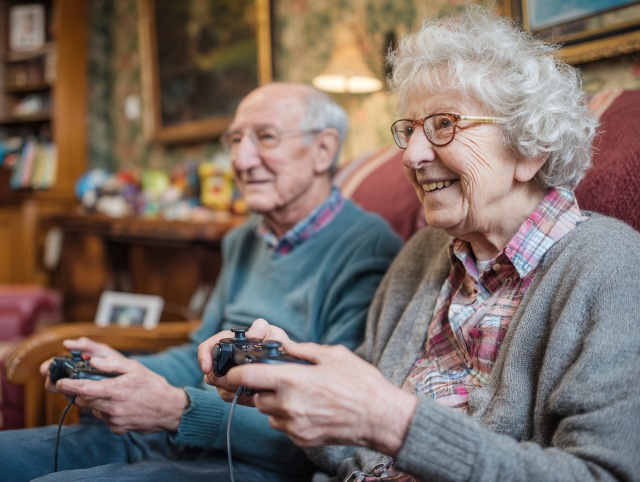Engaging in creative experiences such as music, dance, visual arts, and even specially designed video games can significantly slow the process of brain ageing while promoting overall cognitive vitality, according to a groundbreaking international study recently published in Nature Communications. While creativity has long been celebrated for its aesthetic, emotional, and cultural value, this research provides the first large-scale empirical evidence that creative engagement has a measurable protective effect on brain health. By integrating neuroscientific techniques with behavioural data, the study opens a new frontier in understanding how the brain responds to artistic and imaginative pursuits, suggesting that creativity may be as essential to a healthy mind as diet and exercise are to a healthy body.
The study, conducted across 13 countries and involving more than 1,400 participants, included individuals with varying degrees of creative expertise—ranging from professional tango dancers, musicians, and visual artists to hobbyists, learners, and non-experts. Using advanced brain imaging techniques such as electroencephalography (EEG) and magnetoencephalography (MEG), researchers assessed biological versus chronological brain age through “brain clock” models. These models, which estimate the biological age of the brain based on patterns of neural activity, revealed that those regularly involved in creative activities exhibited “younger” brain profiles. Even participants who engaged in short-term creative training, such as brief video game sessions, showed measurable—albeit smaller—cognitive and neurological benefits, underscoring that creativity’s advantages are accessible to everyone, regardless of skill level.
Dr Agustin Ibanez, senior and corresponding author of the study, Professor of Brain Health at the Global Brain Health Institute (GBHI) and School of Medicine, Trinity College Dublin, and Director of the Latin American Brain Health Institute (BrainLat) at Universidad Adolfo Ibáñez, emphasised the transformative implications of the findings. “Creativity emerges as a powerful determinant of brain health, comparable to exercise or diet,” he said. “Our results open new avenues for creativity-based interventions to protect the brain against ageing and disease. Our study also showed that brain clocks can be used to monitor interventions aimed to improve brain health.” Echoing this sentiment, Dr Carlos Coronel, the study’s first author and a postdoctoral fellow at the GBHI, highlighted the accessibility of creative engagement: “You do not need to be an expert to benefit from creativity. Indeed, we found that learners gained from brief video game training sessions.”
A central feature of the research is its innovative use of brain clocks as diagnostic and predictive tools. Traditionally, brain clocks have been employed to measure negative influences on brain health, such as genetic predispositions, exposure to pollution, and socioeconomic stressors. This study, however, marks one of the first times these models have been used to capture positive influences—demonstrating that creativity can actively preserve and rejuvenate neural integrity. The researchers discovered that creative engagement not only correlates with youthful brain profiles but also strengthens functional connectivity in key regions vulnerable to neurodegeneration, such as the hippocampus, prefrontal cortex, and parietal lobes. Computational modelling further revealed that creative activities enhance the efficiency of brain networks, improving information processing and adaptability—mechanisms believed to underlie creativity’s neuroprotective power.
Beyond its neuroscientific significance, the study carries profound implications for public health and social policy. By illustrating that creativity can act as a low-cost, accessible means of promoting brain resilience, the findings advocate for a broader, more holistic conception of healthy ageing. As Dr Ibanez observed, “This is not relevant only for neuroscience, but it is a cultural and policy opportunity. Our societies need to reimagine healthy ageing through both medical and non-medical domains, such as creativity, arts, and play.” The authors propose that creative engagement could eventually be prescribed alongside exercise and dietary interventions as part of preventive healthcare strategies, particularly for populations at risk of cognitive decline. Such an approach would represent a significant paradigm shift, positioning creativity as a fundamental component of lifelong brain health rather than a recreational luxury.
Dr Coronel added that the diversity of creative experiences examined—ranging from tango dancing to video gaming—illustrates the universality of creativity’s benefits. “While these creative experiences differ, they share a common thread: they help protect brain connections that are vulnerable to accelerated ageing,” he said. “Because everyone’s hobbies and interests are unique, it’s encouraging to know there are many ways to support brain health through creativity.” In essence, the study underscores that creativity, in all its forms, offers a powerful form of cognitive nourishment. It affirms that engaging the imagination, expressing oneself artistically, or mastering a new skill does more than enrich life emotionally and culturally—it literally keeps the brain younger, healthier, and more adaptable. The research thus not only transforms our understanding of creativity’s role in the ageing process but also redefines it as a cornerstone of preventive neuroscience and a vital tool in the pursuit of longevity and mental well-being.
More information: Carlos Coronel et al, Creative experiences and brain clocks, Nature Communications. DOI: 10.1038/s41467-025-64173-9
Journal information: Nature Communications Provided by Trinity College Dublin








